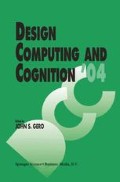Abstract
Abstract. The application of evolutionary algorithms in an aesthetic domain involves human subjective judgment and artificial selection. Evolutionary systems that facilitate this selection strategy are referred to as Interactive Evolutionary Systems (IES). One of the crucial problems for IES is that artificial selection is a time consuming process during which human users are faced with limited scale of the population and high dimensionality of solution space. This paper addresses this problem through an integration of General Regression Neural Network (GRNN) and an IES, using facial character creation as an example domain. This approach formulates designers’ aesthetic fitness evaluation in an IES through a learning mechanism provided by the GRNN. Our aim is to build an intelligent and evolutionary system that possesses some empirical knowledge as well as a convergent thinking ability to support human users. In order to study the feasibility of our approach, we have implemented a prototype system for evolutionary facial character creation. The initial results generated by this system are reported in this paper.
Access this chapter
Tax calculation will be finalised at checkout
Purchases are for personal use only
Preview
Unable to display preview. Download preview PDF.
References
Baluja, S, Pomerleau, DA and Jochem, T: 1994, Towards automated artificial evolution for computer generated images, Connection Science 6(2&3): 325–354.
Baxter, M: 1995, Product Design, Practical Methods for the Systematic Development of New Products, Chapman & Hall, pp. 45–46.
Bentley, PJ: 1999, An introduction to of evolutionary design by computers, in PJ Bentley (ed), Evolutionary Design by Computer, Morgan Kaufmann, San Francisco, California, pp. 173.
Biles, JA, 1994: Genjam: A genetic algorithm for generating jazz solos, Proceeding of International Computer Music Conference, pp. 131–137.
Johanson, B and Poli, R: 1998, GP-music: An interactive genetic programming system for music generation with automated fitness raters, in JR Koza, W Banzhaf, K Chellapilla, K Deb, M Dorigo, DB Fogel, MH Garzon, DE Goldberg, H Iba, and R Riolo (eds), Proceedings of the Third Annual Conference on Genetic Programming, pp. 181–186.
Kohonen, T: 1993, Things you haven’t heard about self-organizing map, Proceedings of the International Conference on Neural Networks, III 1147–1156.
Ohsaki, M and Takagi, H: 1998, Improvement of presenting interface by predicting the evaluation order to reduce the burden of human interactive EC operators, IEEE International Conference on System, Man, and Cybernetics (SMC’98), pp. 1284–1289.
Parzen, E: 1962, On estimation of a probability density function and mode, Annals of Math. Stat. 33: 1065–1076,
Saunders, R: 2002, Curious Design Agents and Artificial Creativity, PhD Thesis, University of Sydney.
Saunders, R and Gero, JS: 2001, The digital clockwork muse: A computational model of aesthetic evolution, in G Wiggins (ed), Proceedings of the AISB’OlSymposium on AI and Creativity in Arts and Science, SSAISB, York, UK, pp. 12–21.
Sims, K: 1991, Artificial Evolution for Computer Graphics, Computer Graphics 25(4): 319–328.
Specht, DF: 1990, Probabilistic neural networks, Neural Networks 3: 109–118.
Specht, DF: 1991, A general regression neural network, IEEE Transactions on Neural Networks 2: 568–576.
Yaochu, J: 2003, A comprehensive survey of fitness approximation in evolutionary computation. Soft Computing Journal (in press).
Author information
Authors and Affiliations
Editor information
Editors and Affiliations
Rights and permissions
Copyright information
© 2004 Springer Science+Business Media Dordrecht
About this paper
Cite this paper
Gu, Z.Y., Tang, M.X., Frazer, J.H. (2004). Formulation of Aesthetic Evaluation & Selection. In: Gero, J.S. (eds) Design Computing and Cognition ’04. Springer, Dordrecht. https://doi.org/10.1007/978-1-4020-2393-4_18
Download citation
DOI: https://doi.org/10.1007/978-1-4020-2393-4_18
Publisher Name: Springer, Dordrecht
Print ISBN: 978-90-481-6650-3
Online ISBN: 978-1-4020-2393-4
eBook Packages: Springer Book Archive

